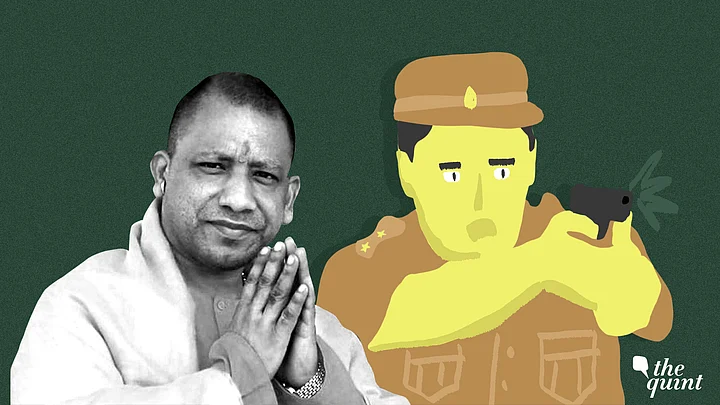The police in Uttar Pradesh (UP) has been under the scanner for ‘fake’ encounters under the regime of Chief Minister Yogi Adityanath, with families of victims crying foul over the suspicious killings of their near and dear ones.
According to the information provided by the UP police, 1142 encounters were reported in the state between 20 March 2017 and 31 January 2018.
On 11 January 2019, a press release by the Office of the High Commissioner for United Nations Human Rights (OHCHR) ‘expressed alarm about allegations of at least 59 extrajudicial killings by police in Uttar Pradesh since March 2017’.
Four UN human rights experts have sent detailed information about 15 such cases to the Indian government. They have expressed concerns about a pattern that suggests ‘individuals allegedly being abducted or arrested before their killing, and their bodies bearing injuries indicative of torture’.
The Quint sent a questionnaire to Dr Agnes Callamard, United Nations Special Rapporteur on extrajudicial, summary or arbitrary executions, to get a deeper sense of the UN’s concerns. Below are excerpts from an email interview:
With four UN human rights experts expressing concern about 59 extrajudicial killings by police in Uttar Pradesh, what kind of ‘pattern’ has been observed in these cases?
We are extremely concerned over several apparent patterns including that, in several cases, the victims appear to have been seen being abducted or taken into custody and forcibly disappeared before the alleged encounters; in many of the FIRs, an almost identical sequence of events is recorded, and in some cases identical texts which may point to the use of a common template; the victims’ bodies reportedly showed injuries indicative of torture and of close range fire, which point to the unlikeliness of a shootout between police and the alleged victims.

What are some of the concerns raised as far as 15 cases are concerned, in which most of the victims are Muslims?
Myself and the other three experts raised serious concerns that these cases appear to be extrajudicial executions which occurred while the victims were in the custody of the police, that they were ill-treated, tortured or disappeared before their deaths and that they are cases of “false encounter” killings.
In addition, we expressed serious concern over the apparent systematic failure of the police authorities to conduct independent, impartial, prompt, effective, thorough and transparent investigations into these violent deaths as required by international standards. We also raised concerns over threats and harassment against family members and human rights defenders working on the cases.
I am also extremely concerned that apparently there have been new incidents of harassment even since the press release was issued including the arrest and alleged disappearance of relatives of one of the victims. As we flagged in the release, these are extremely serious allegations warranting an urgent response.

Has there been any response from the Indian government after an alarm was raised by UN human rights experts in a press release dated 11 January 2019?
No response has been received from the government to the letter sent in mid-December 2018 seeking further information or to the press release dated 11 January 2019. I regret that India has not responded to any joint letters sent by mandate holders in 2017 or 2018, including several letters I have sent raising other issues related to alleged extrajudicial, summary or arbitrary executions.

Did the Uttar Pradesh police fail to comply with the Indian Supreme Court’s guidelines on encounters?
The information we received indicates that in none of the cases were all of the Supreme Court’s guidelines on encounters followed. In particular, in some or all cases, it appears that the authorities failed to tell the families about the deaths, failed to provide the post-mortem report to the families, opened FIRs only against the victims and no FIR or investigation was opened against the police involved, failed to transfer the case to an independent investigative agency or hold an inquiry by a judicial magistrate. In at least two cases, an officer involved in the incidents reportedly later received a promotion.

Have there been allegations of corruption against the police?
Yes, there are allegations of corruption, including that in one case, the family were asked for a bribe in exchange for release of the individual, who was later killed, and in another the individual was asked for money to suppress a FIR being issued against him prior to the killing.
Last year, the OHCHR had said that the government was deliberately delaying the probe into alleged fake encounters in Manipur. Has the government’s response in Uttar Pradesh been similar?
There are a number of similarities between the cases and the responses. Both cases concern alleged “fake encounter killings”, where the government did not fulfil their obligation to conduct prompt, effective and thorough investigations into all allegations of potentially unlawful killings. Additionally, in both cases, human rights defenders working on the cases have faced threats and harassment.
(At The Quint, we question everything. Play an active role in shaping our journalism by becoming a member today.)


